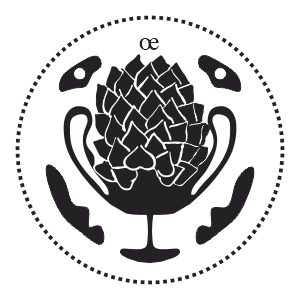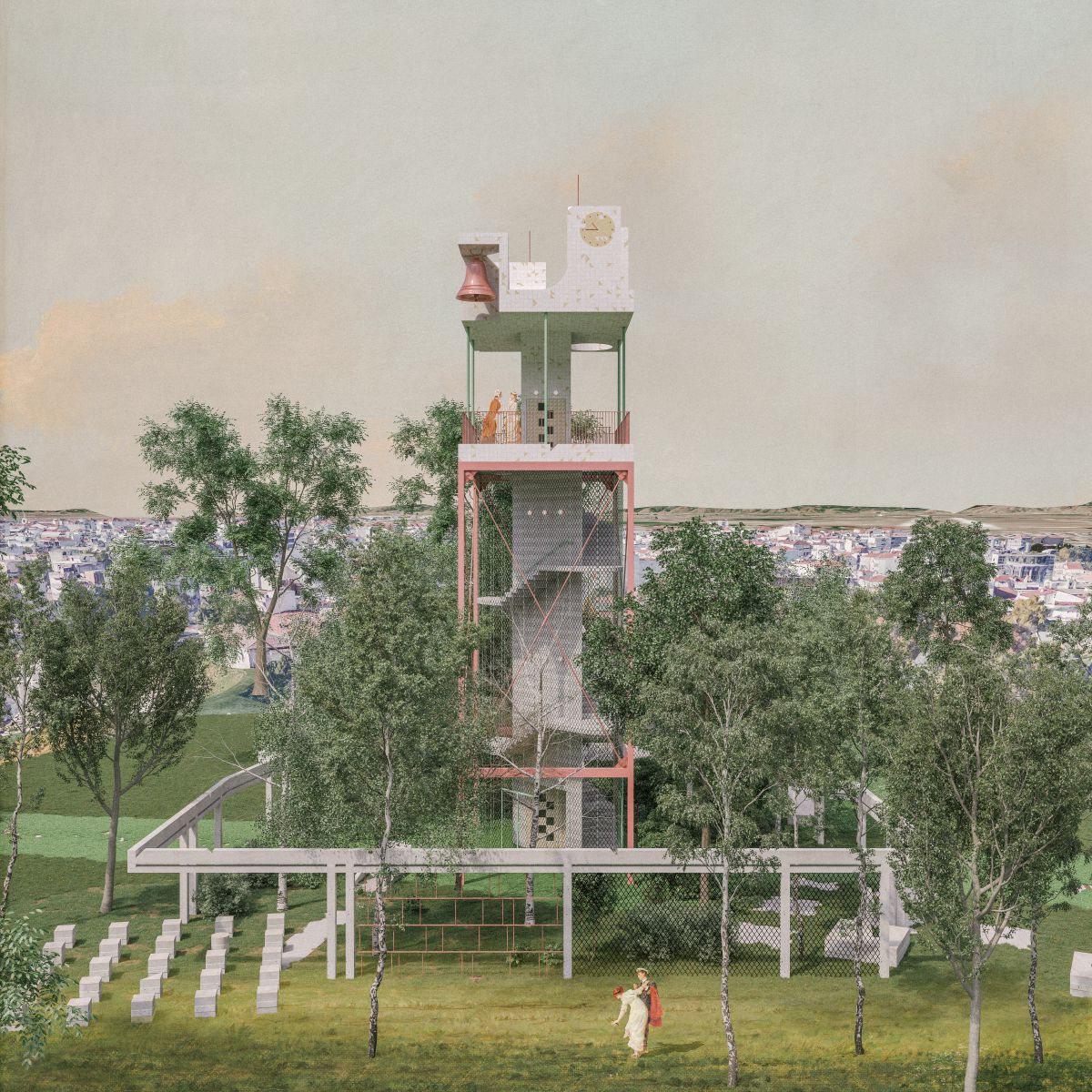
EN
The form of a vertical structure – which an urban clock must inevitably follow – has always been in contrast with its archetypical opposite: The tower and the garden, archetypes as old as human civilization itself, represent a series of opposing values that function on several different symbolic levels: The tower represents power and extroversion, domination over nature and the competition of man against the god(s). It is a representation of the male element. The garden on the other hand, represents compassion and introversion, acceptance and respect towards nature, coexistence with the divine. It is simultaneously an expression of the feminine. These two archetypes find their most characteristic image in the tower of Babel and the garden of Eden respectively.
The proposal, having to deal with a tower-shaped structure by definition, chooses to merge the two archetypes: the base of the tower is replaced by a garden that essentially challenges the dominance and the very foundation of the tower. Thus, the vertical line that the structure would have originally been, is transformed into an element that seems to float above the garden – in essence, as if it emerges from it.
The element that is positioned above the garden becomes the observation deck that is ‘crowned’ with a prismatic volume that hosts three clocks and one bell that will be ringing the time (while also referencing the four previous versions of the clocks of the city that succeeded one another, the first of which included indeed a bell). The concrete core below the deck supports the structure and accommodates the vertical movement, while it is hidden from the viewer by the surrounding plants and trees. The outer part of the stairs is enclosed by a metal mesh that allows climbing plants to grow, further eliminating the structure’s presence at its lowest points.
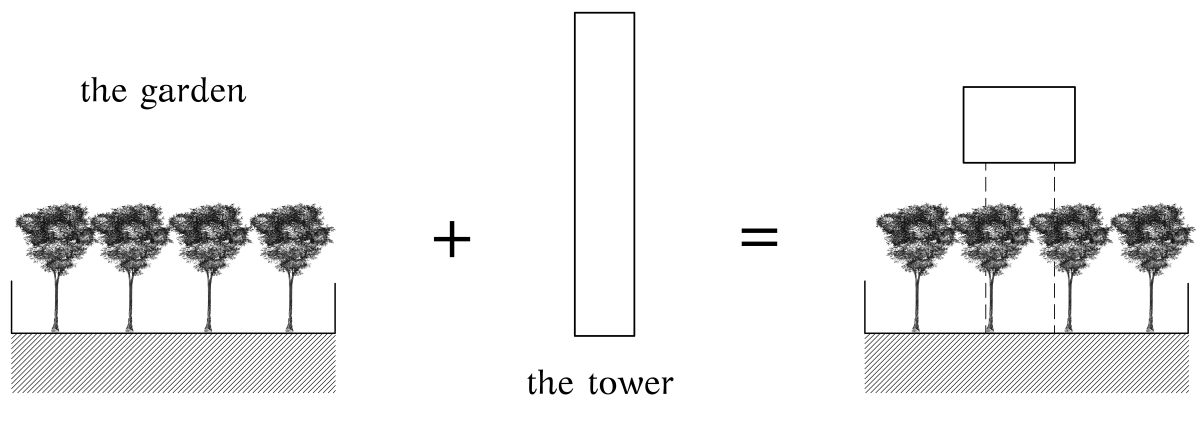
GR
Η μορφή της κατακόρυφης κατασκευής – που αναπόφευκτα πρέπει να ακολουθήσει ένα αστικό ρολόι, βρισκόταν πάντοτε σε αντιδιαστολή με το αρχετυπικό αντίθετό της: Ο πύργος και ο κήπος, αρχέτυπα που πάνε τόσο πίσω στο χρόνο σχεδόν όσο και η ανθρώπινη παρουσία, εκπροσωπούν και συμβολίζουν μία σειρά από αντίθετα που λειτουργούν σε πολλαπλά επίπεδα: Ο πύργος έχει να κάνει με τη δύναμη και την εξωστρέφεια, την επιβολή πάνω στη φύση, τον ανταγωνισμό του ανθρώπου απέναντι στον / τους θεό/ούς. Αποτελεί έκφραση του αρσενικού στοιχείου. Ο κήπος από την άλλη συμβολίζει την συμπόνια και την εσωστρέφεια, την αποδοχή και το σεβασμό της φύσης, τη συνύπαρξη με το θείο. Είναι ταυτόχρονα μία έκφραση του θηλυκού. Τα δύο αυτά αρχέτυπα βρίσκουν την πιο χαρακτηριστική τους εικόνα στον πύργο της Βαβέλ και τον κήπο της Εδέμ αντίστοιχα.
Η πρόταση, έχοντας να αντιμετωπίσει μία εξ’ ορισμού πυργόσχημη κατασκευή, επιλέγει να δημιουργήσει έναν συνδυασμό των δύο: η βάση του πύργου αντικαθίσταται από έναν κήπο που ουσιαστικά αποδυναμώνει τη στιβαρότητά του ‘απειλώντας’ τα θεμέλιά του. Έτσι η κατακόρυφη γραμμή που θα ήταν η κατασκευή μετατρέπεται σε ένα στοιχείο που μοιάζει να αιωρείται πάνω από τον κήπο – στην πραγματικότητα σαν να ξεπροβάλλει μέσα από αυτόν.
Το στοιχείο αυτό που βρίσκεται πάνω από τον κήπο μετατρέπεται στο χώρο του παρατηρητηρίου που ‘στέφεται’ με ένα πρισματικό όγκο που φιλοξενεί τρία ρολόγια και μία καμπάνα για να σημαίνει την ώρα και να προσφέρει και ηχητική παρουσία στην κατασκευή (και ως ανάμνηση των τεσσάρων ρολογιών της πόλης που διαδέχονταν το ένα το άλλο, το πρώτο από τα οποία είχε και αυτό καμπάνα). Ο πυρήνας που στηρίζει σε μεγάλο βαθμό την κατασκευή ενώ φιλοξενεί και την κατακόρυφη επικοινωνία κρύβεται από τις φυτεύσεις που βρίσκονται γύρω του. Στο εξωτερικό μέρος της σκάλας τοποθετείται πλέγμα που επιτρέπει σε αναρριχόμενα φυτά να το καταλάβουν εξαφανίζοντας ακόμα περισσότερο την υπόσταση της κατασκευής στα χαμηλότερα σημεία της.
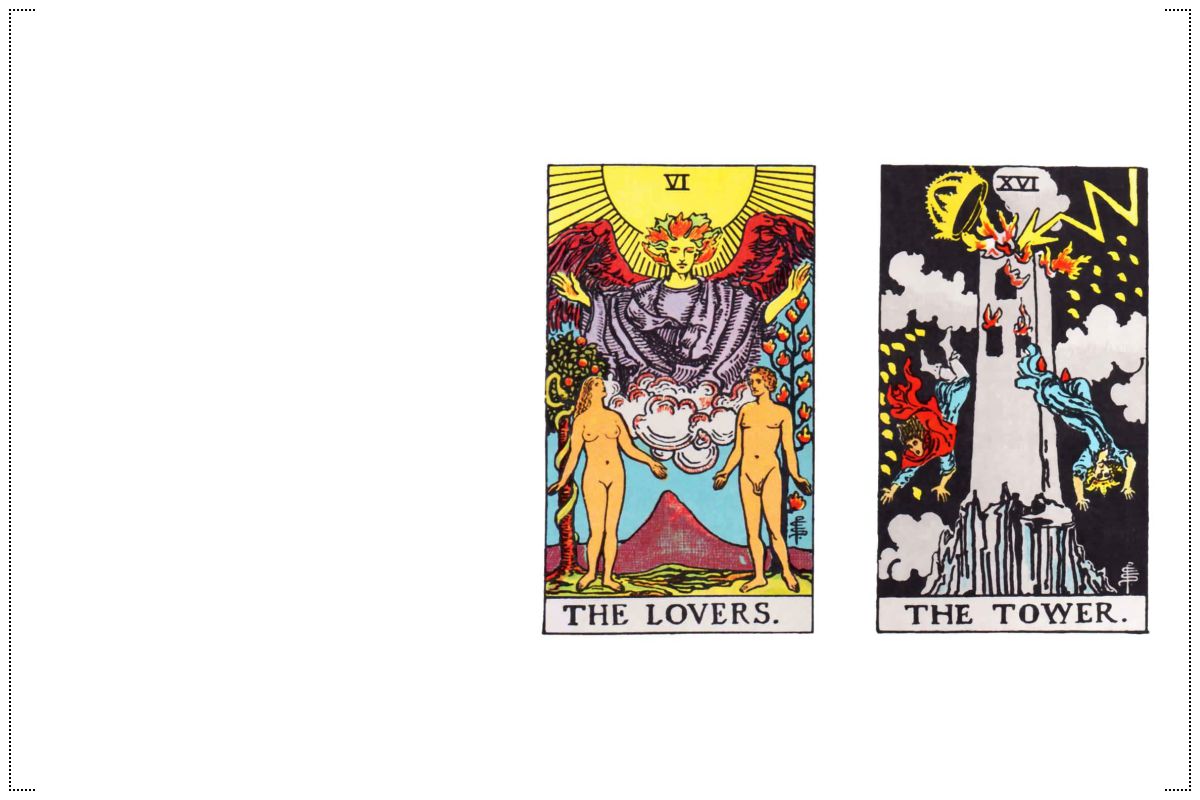
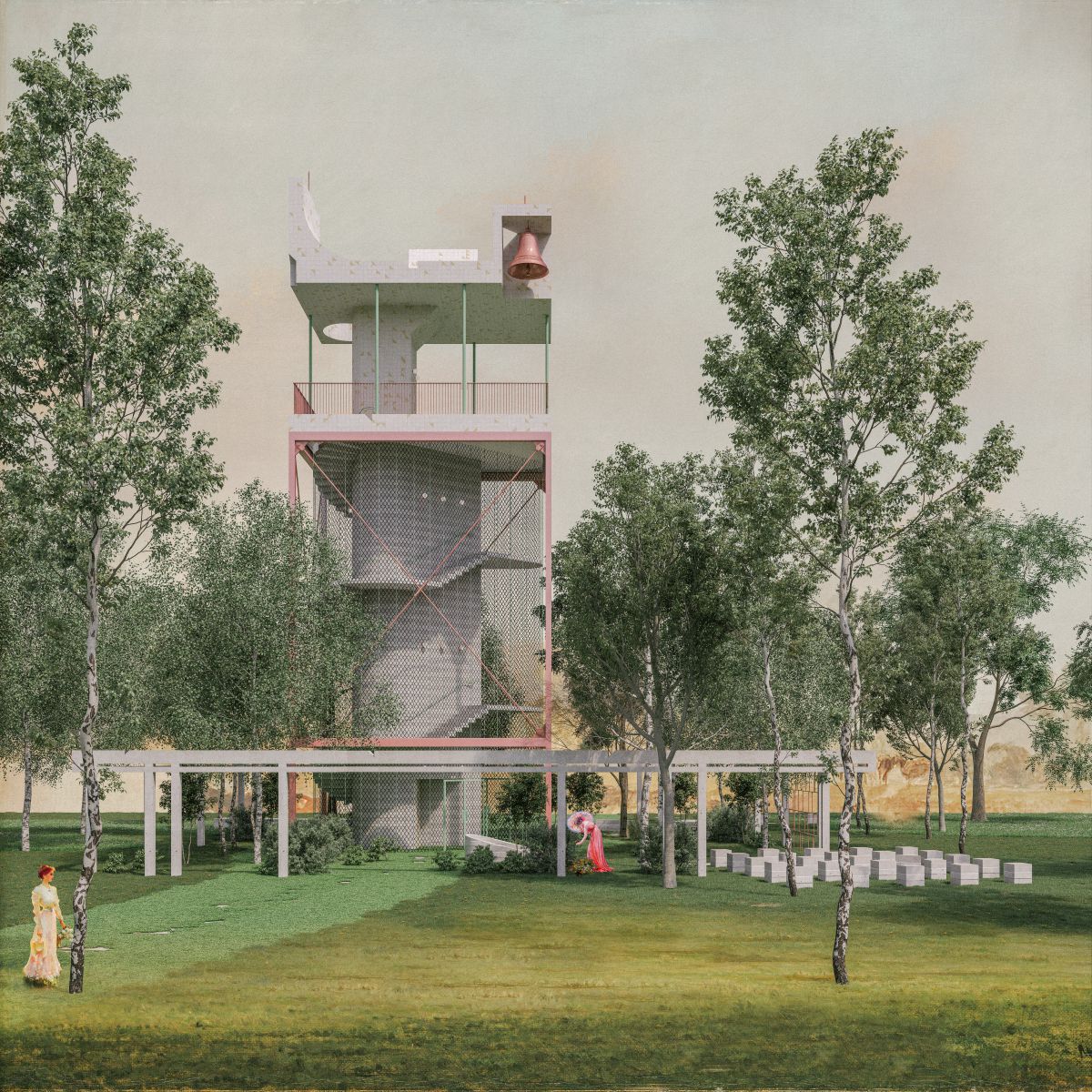
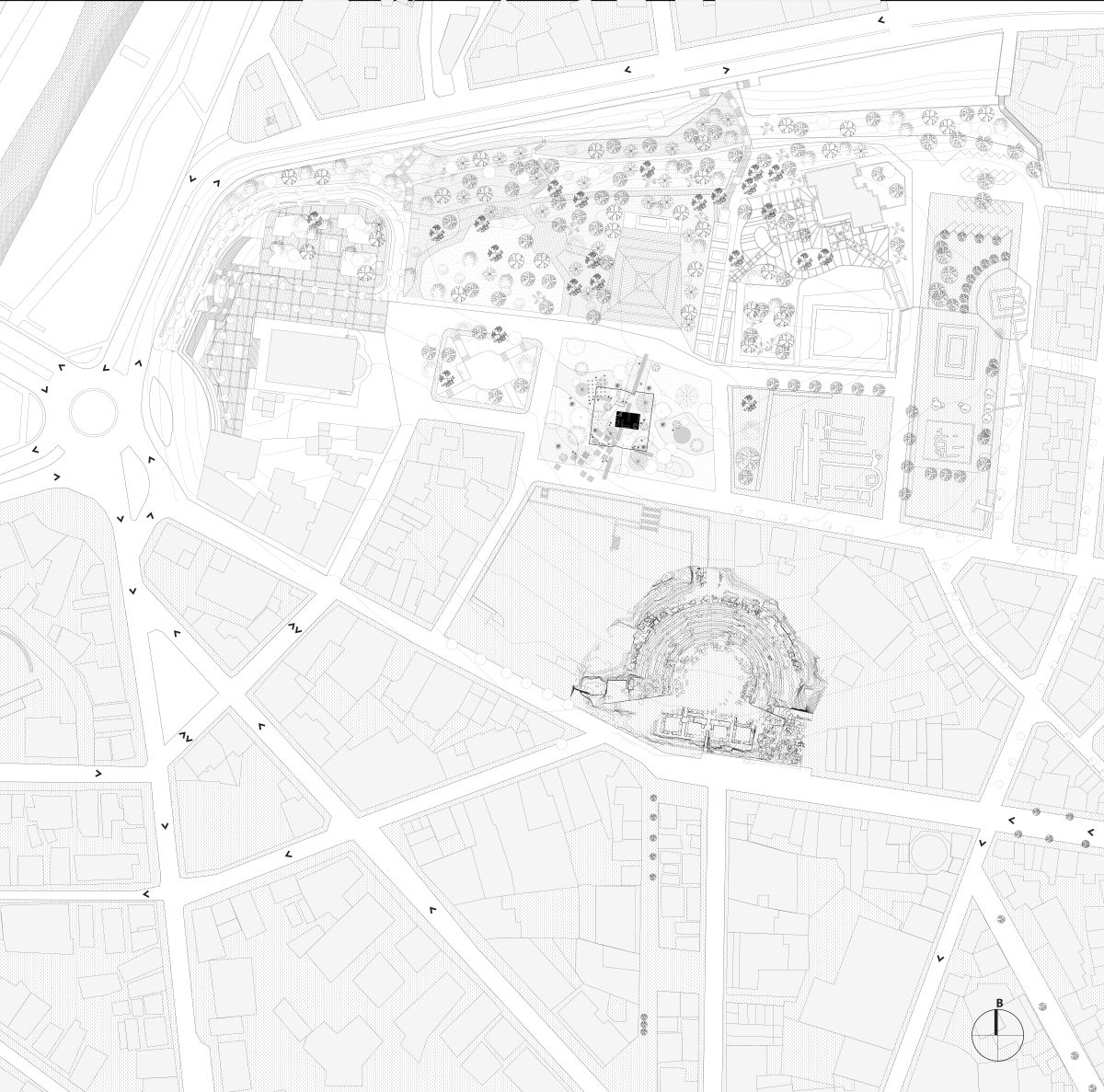
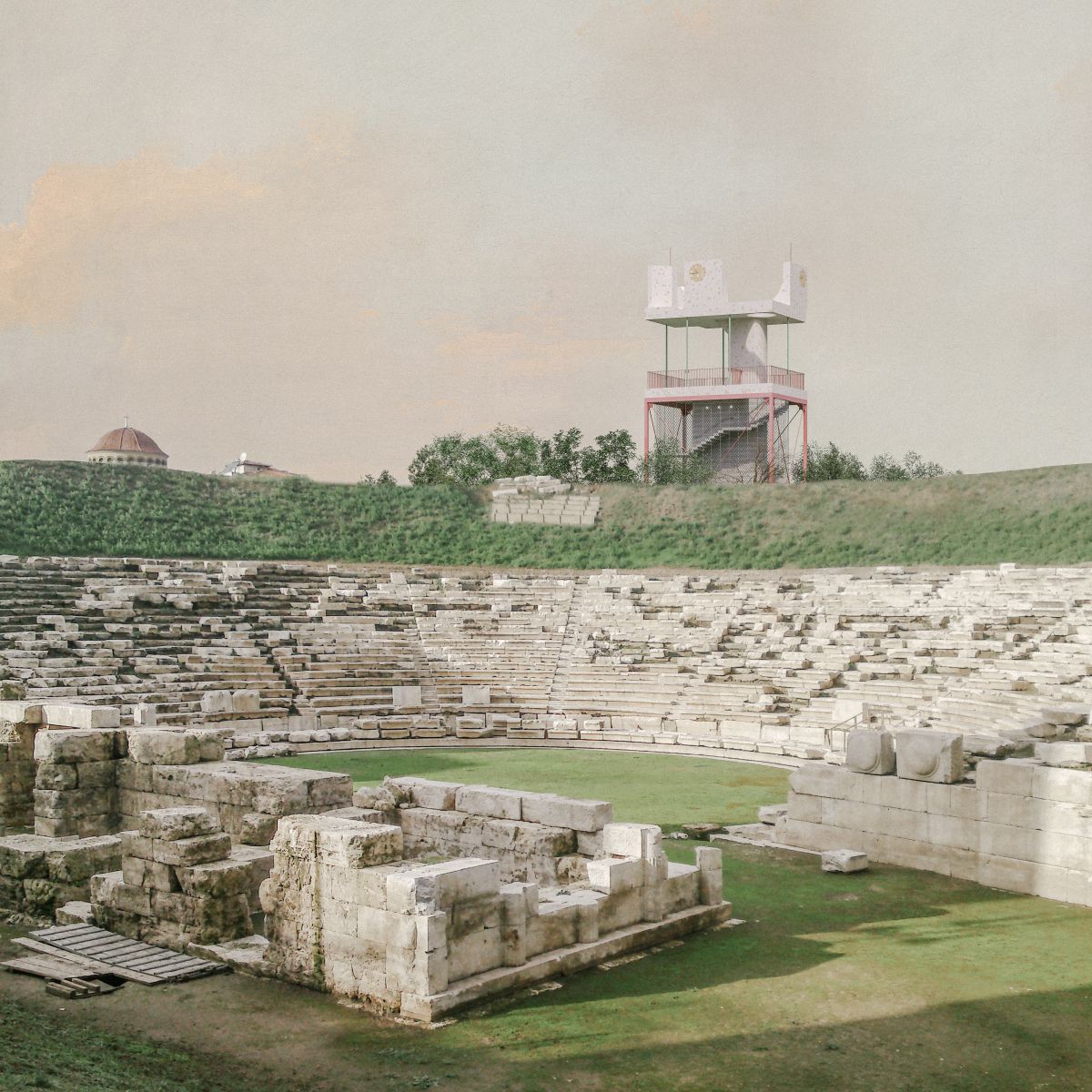

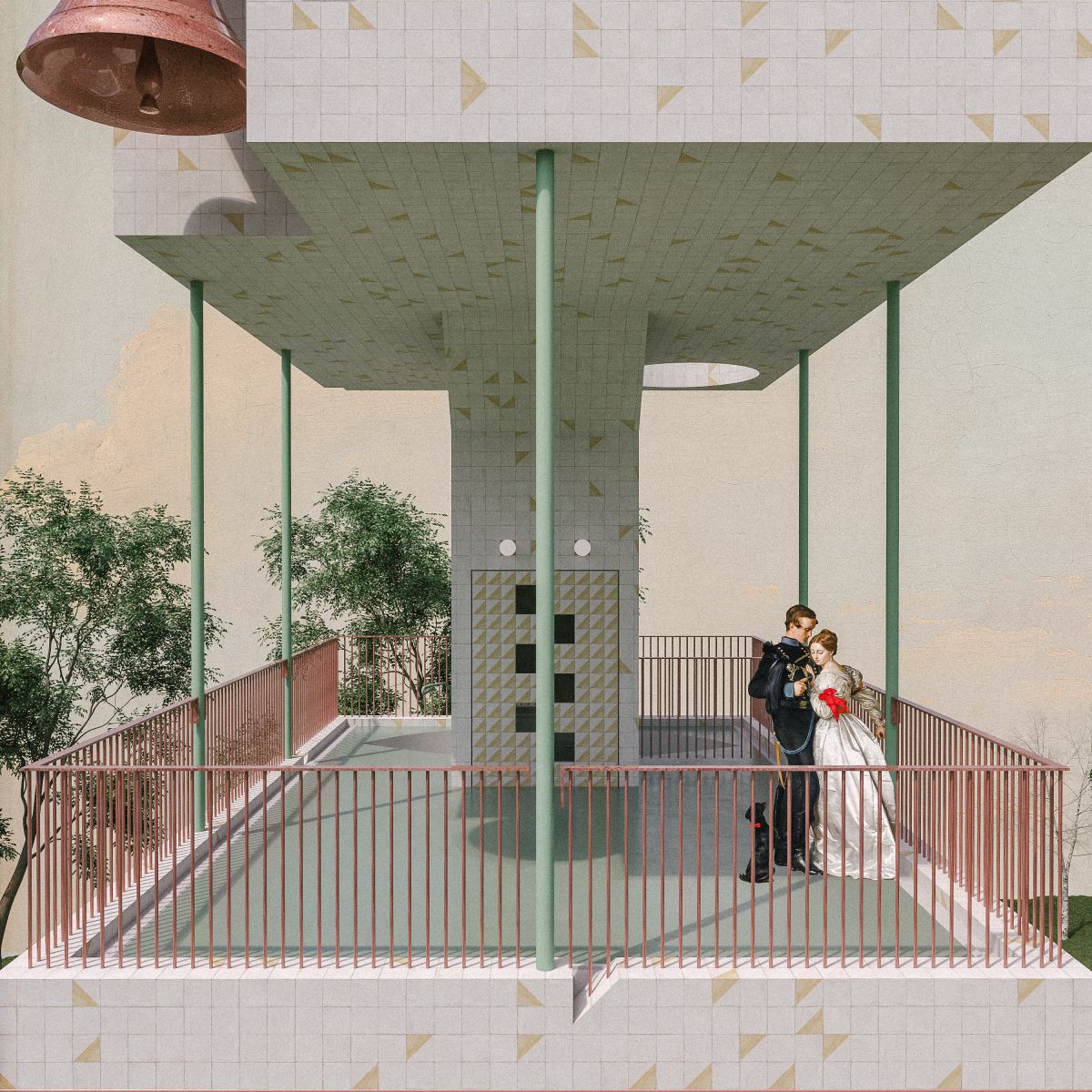

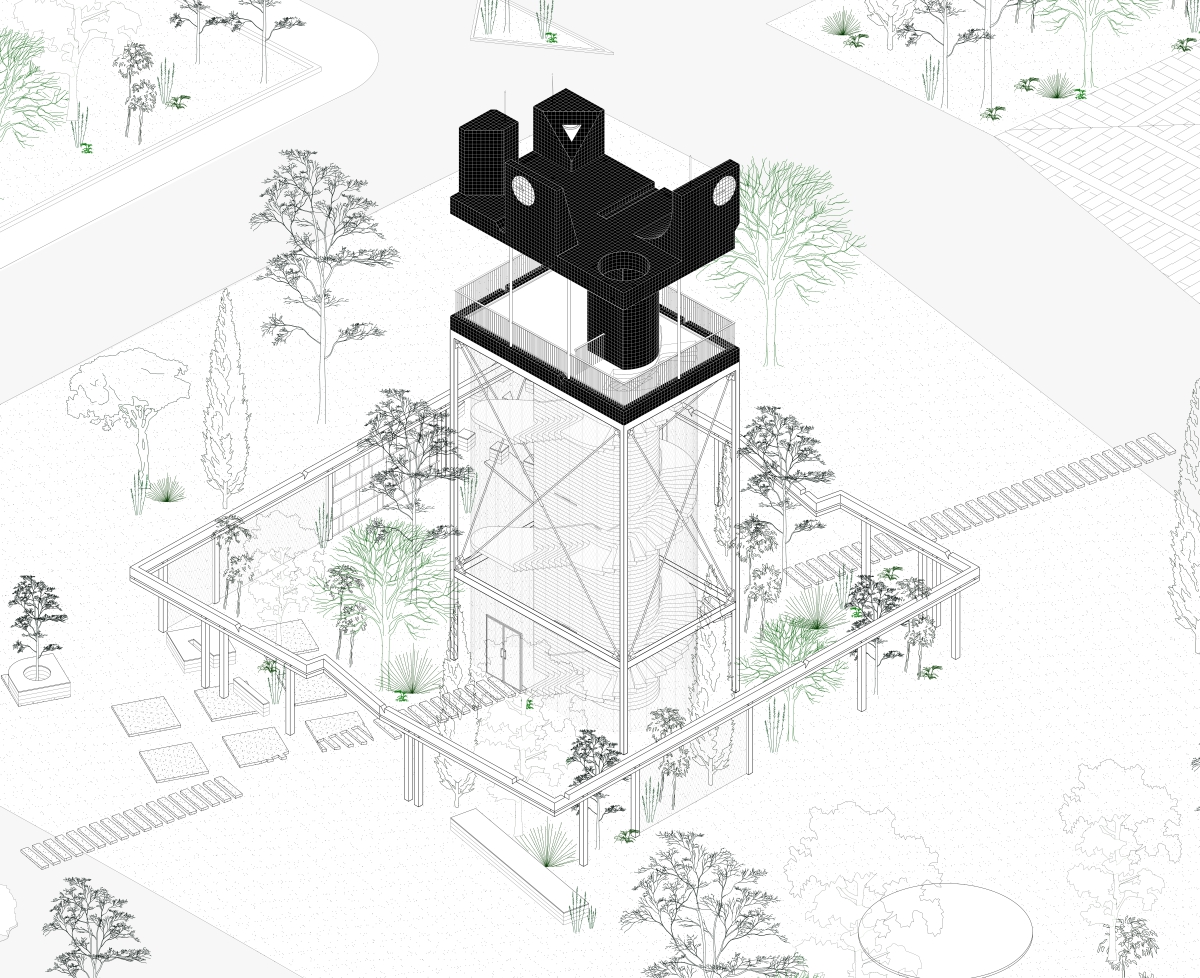
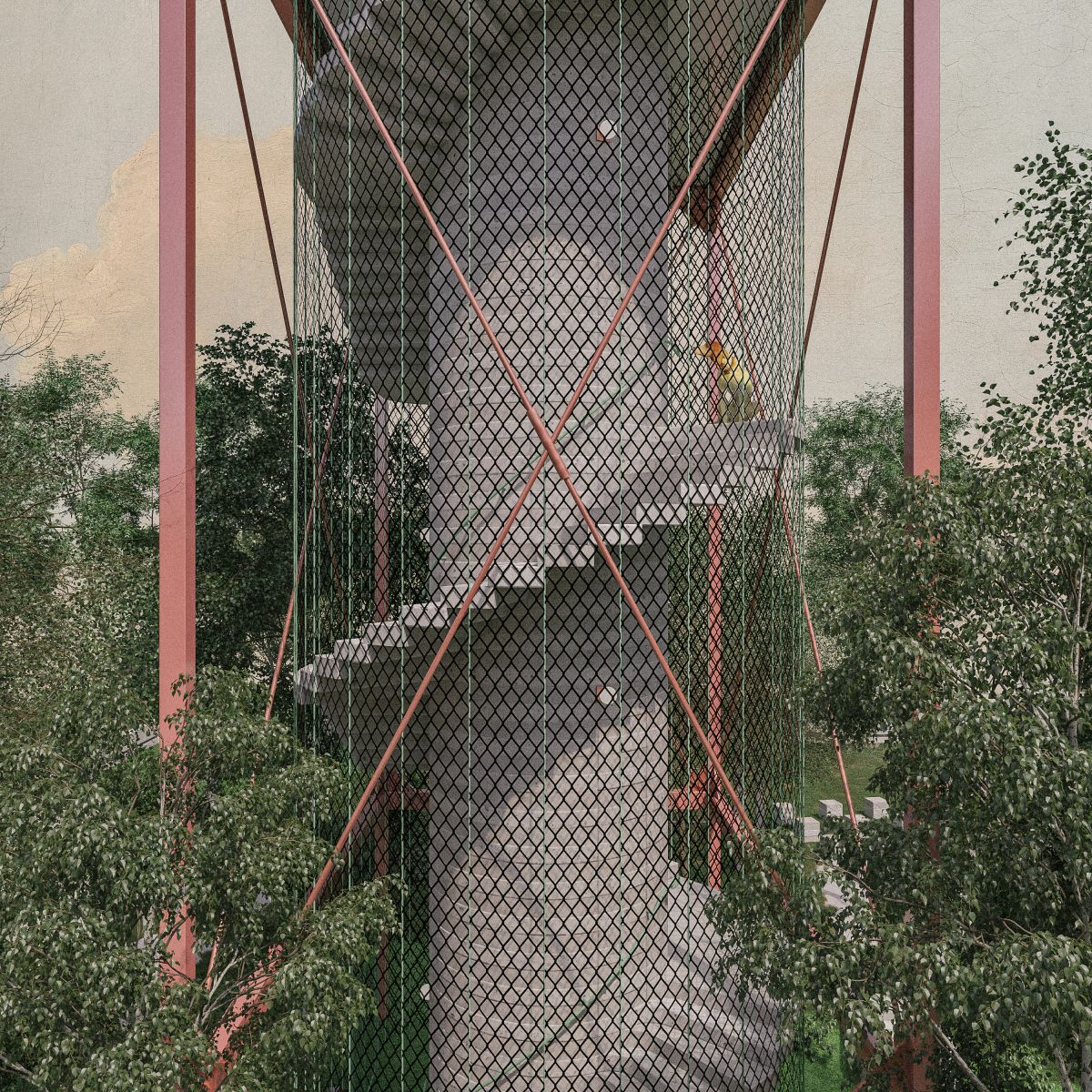
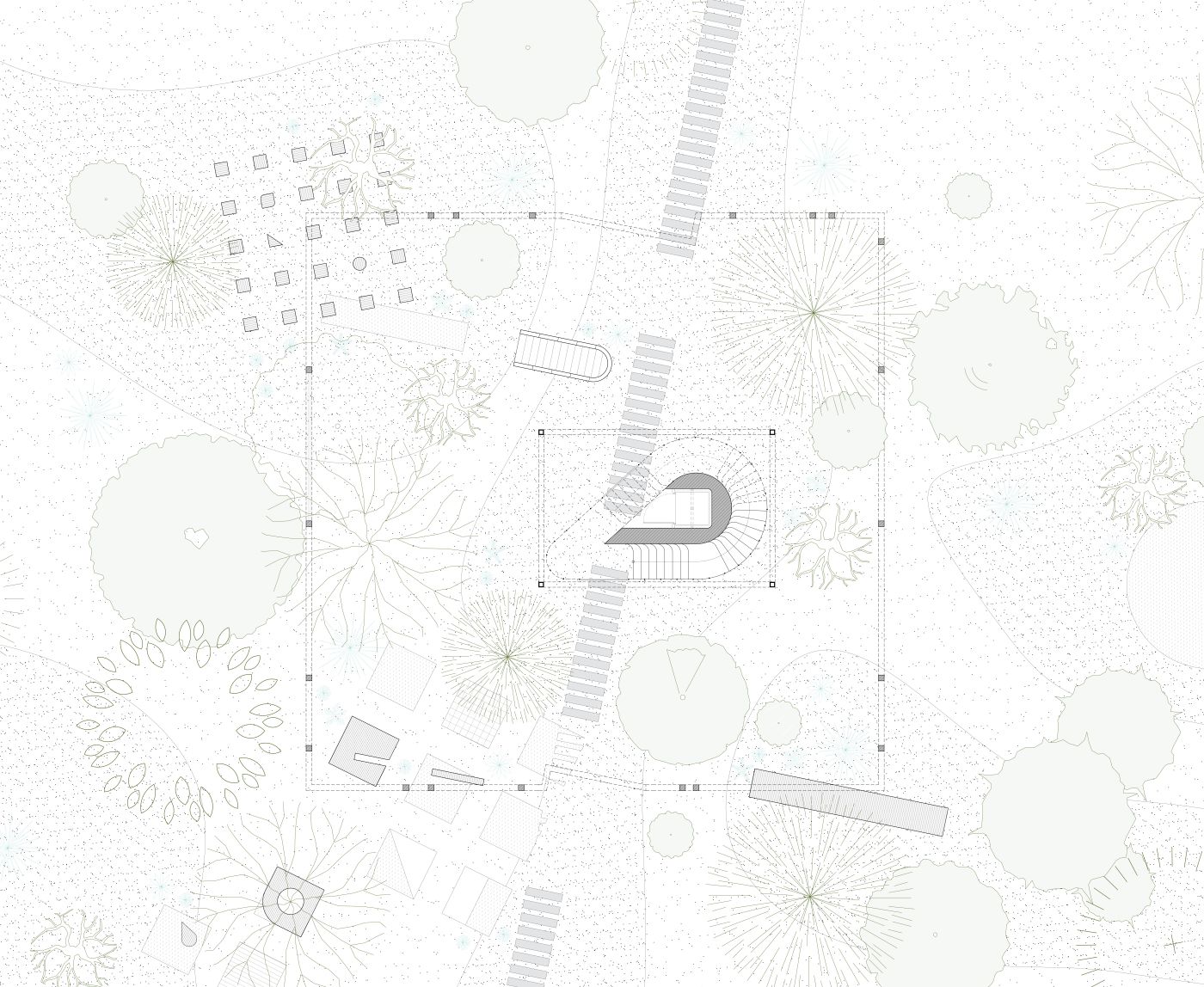
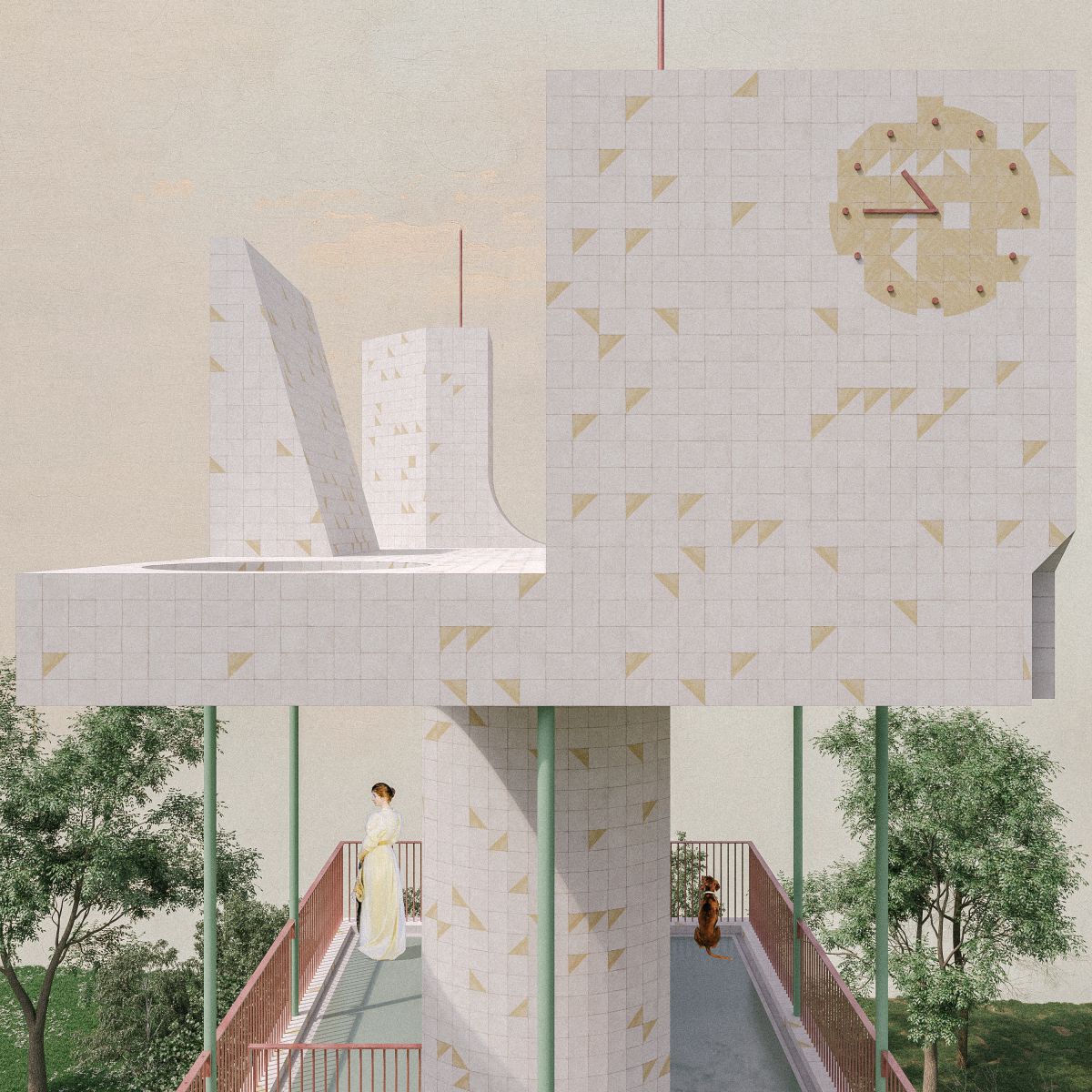
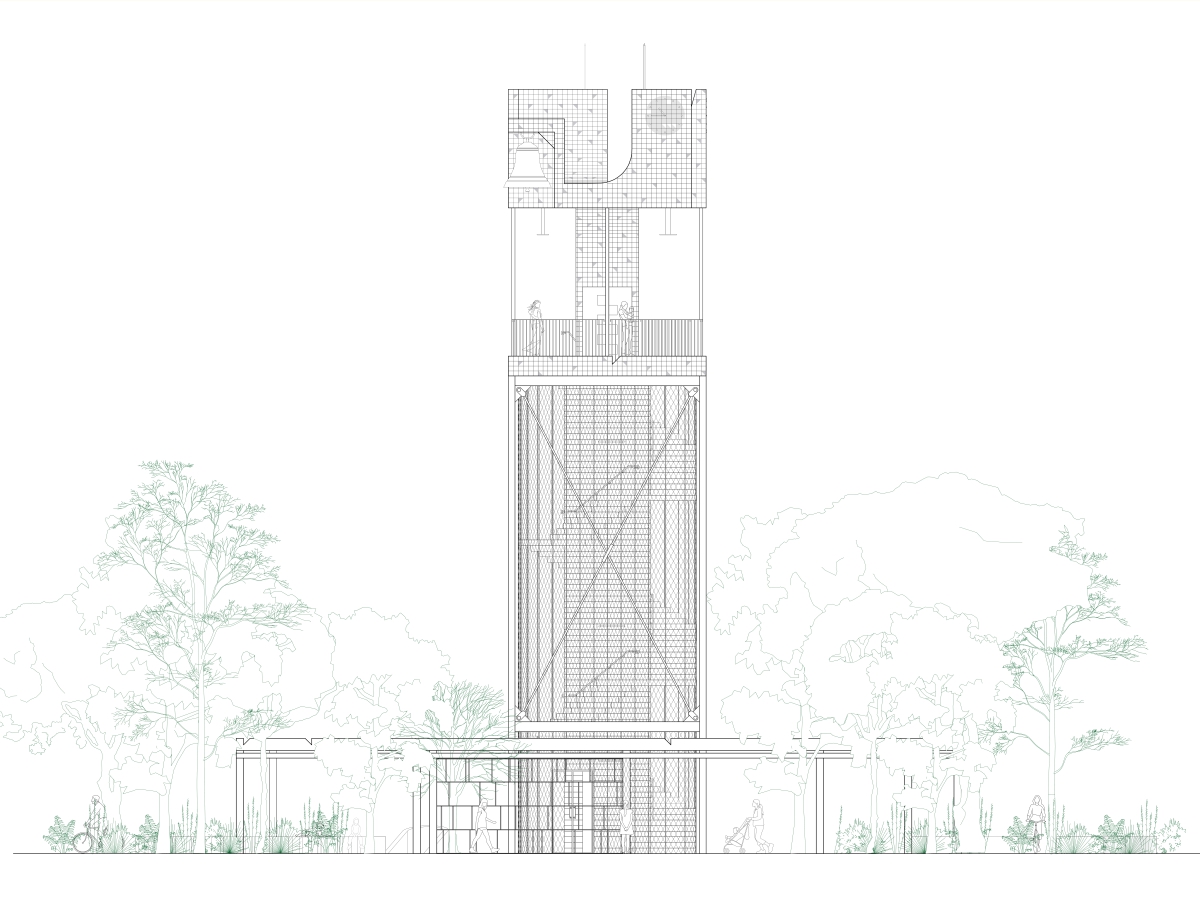
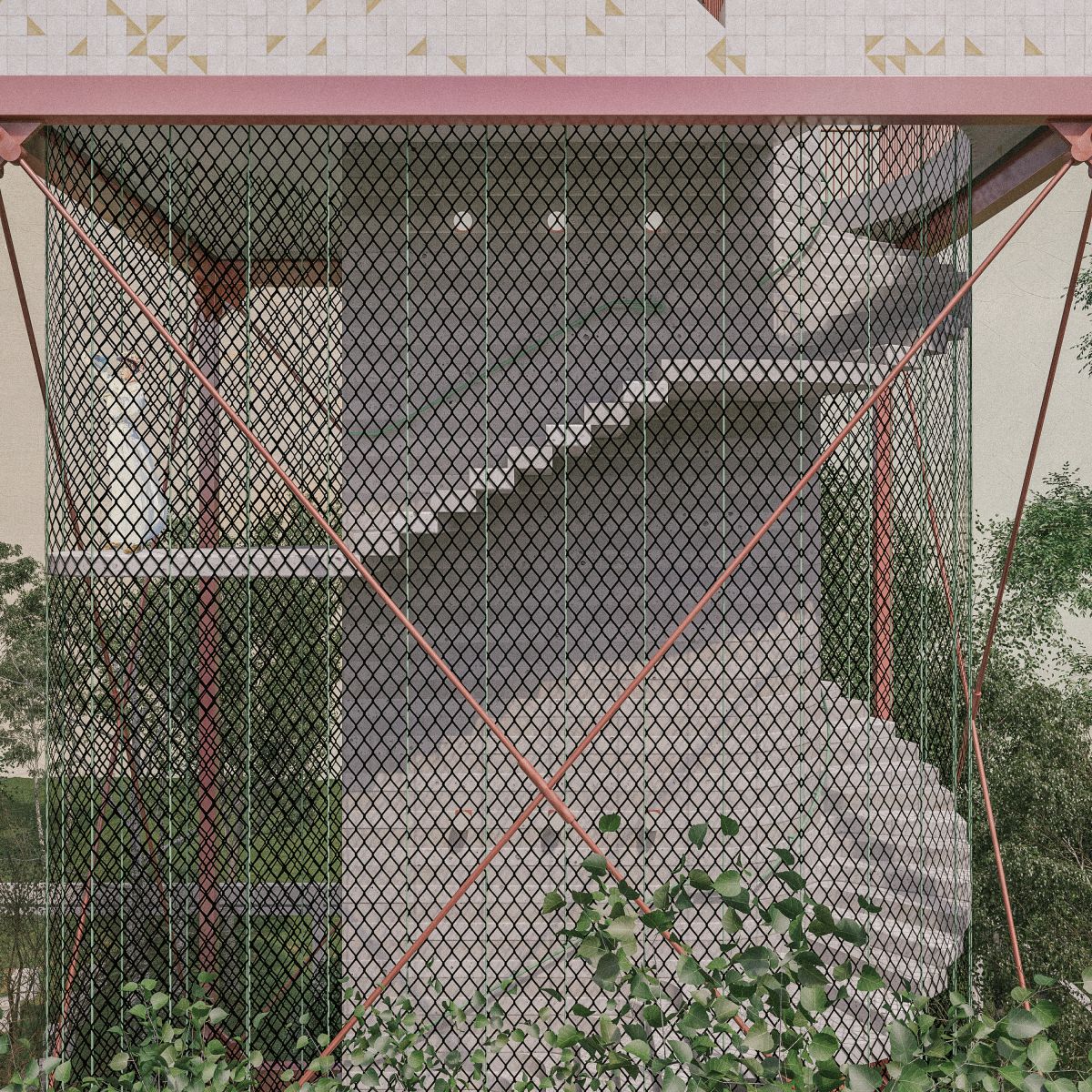
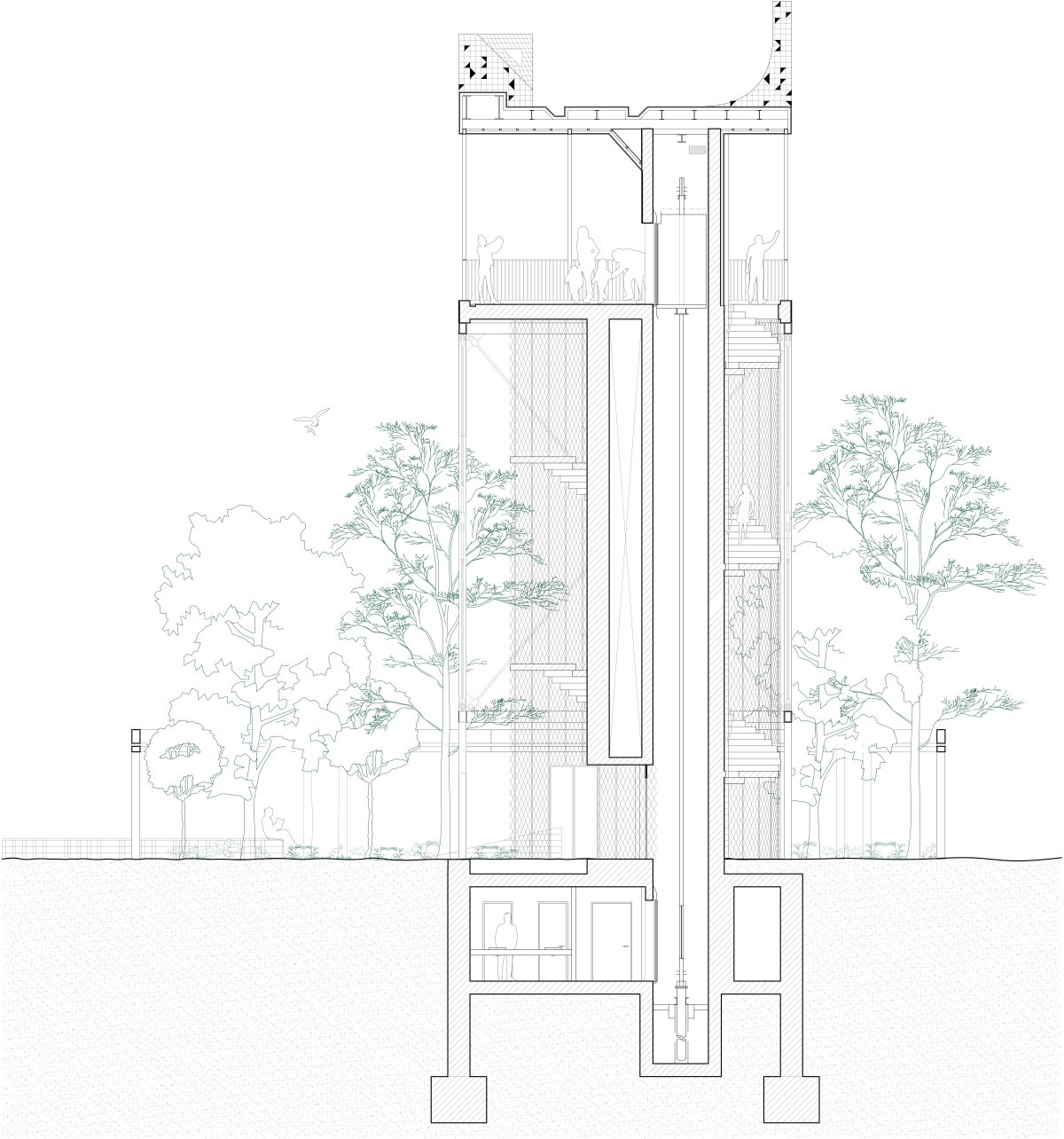
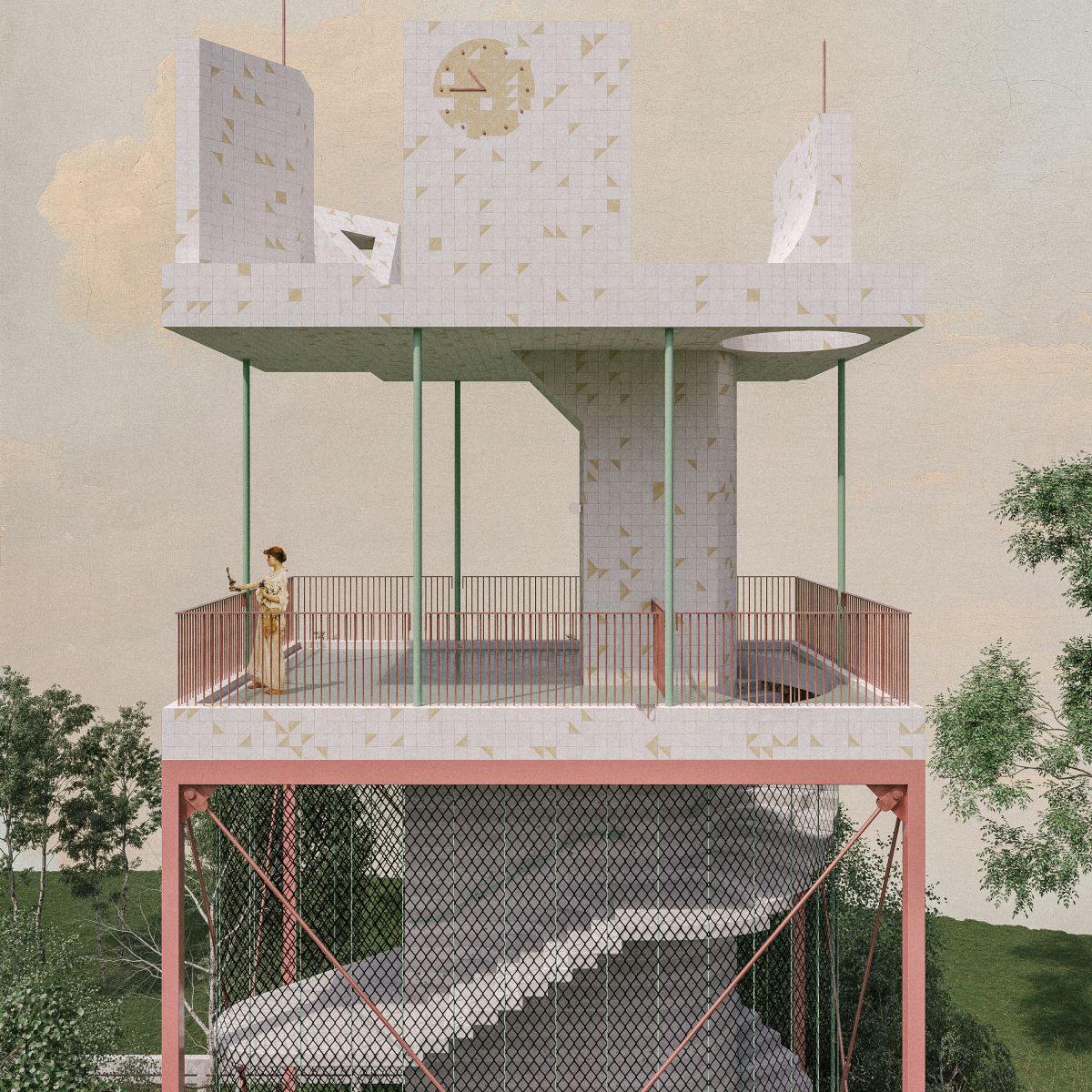
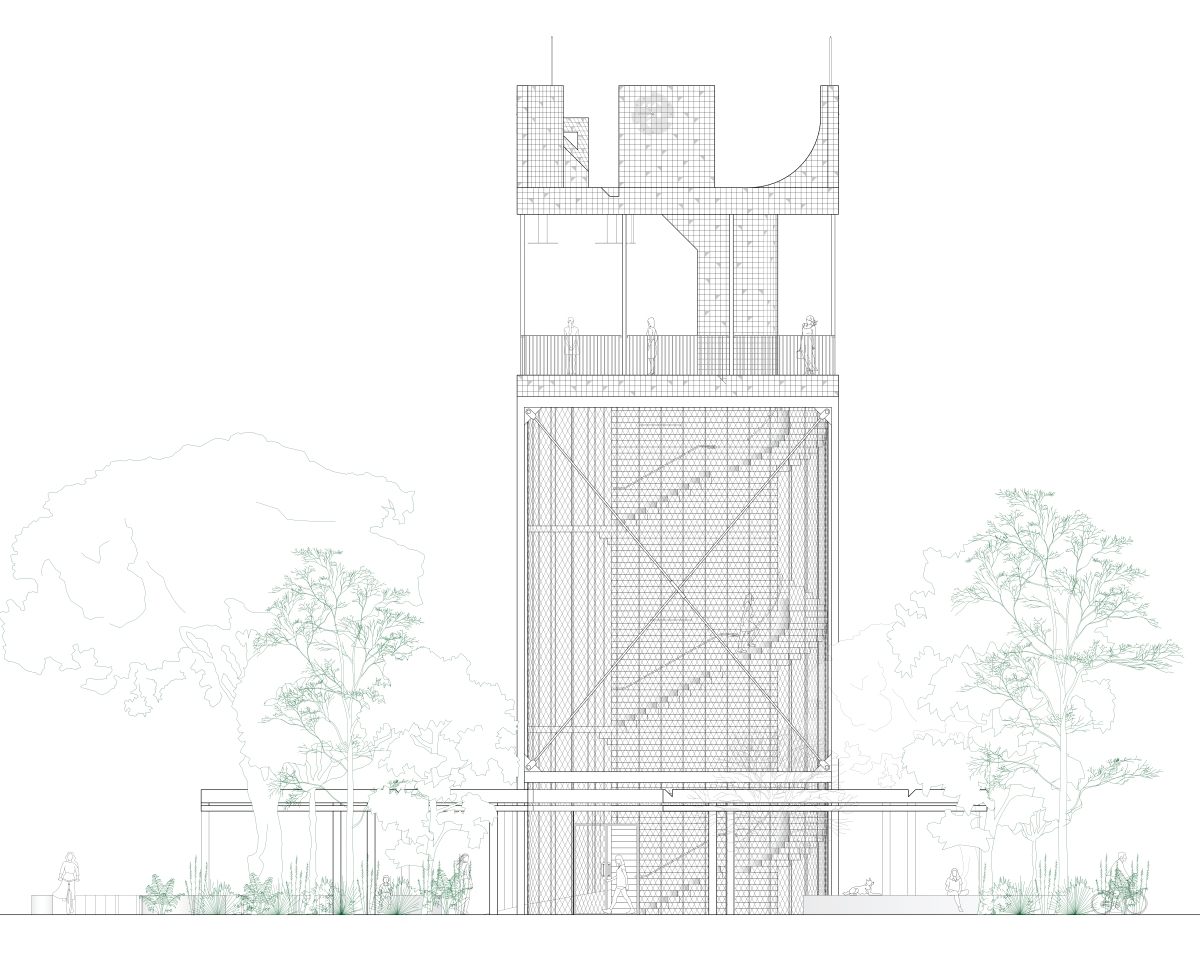
The fool who persists in his folly will become wise.
William Blake
| >>info: | |
| design: | object-e | Dimitris Gourdoukis & Katerina Tryfonidou with Mary Nantsou, Konstantina Papadiamanti, Stelios Sakellariou, Eleni Stathi, Athanasia Tsifoutidou |
| structural engineer: | Rita Tzeliou |
| mechanical engineer: | Giorgos Evgenidis |
| awards | Honorable Mention, Larisa public clock competition |
| date: | 2023 |
